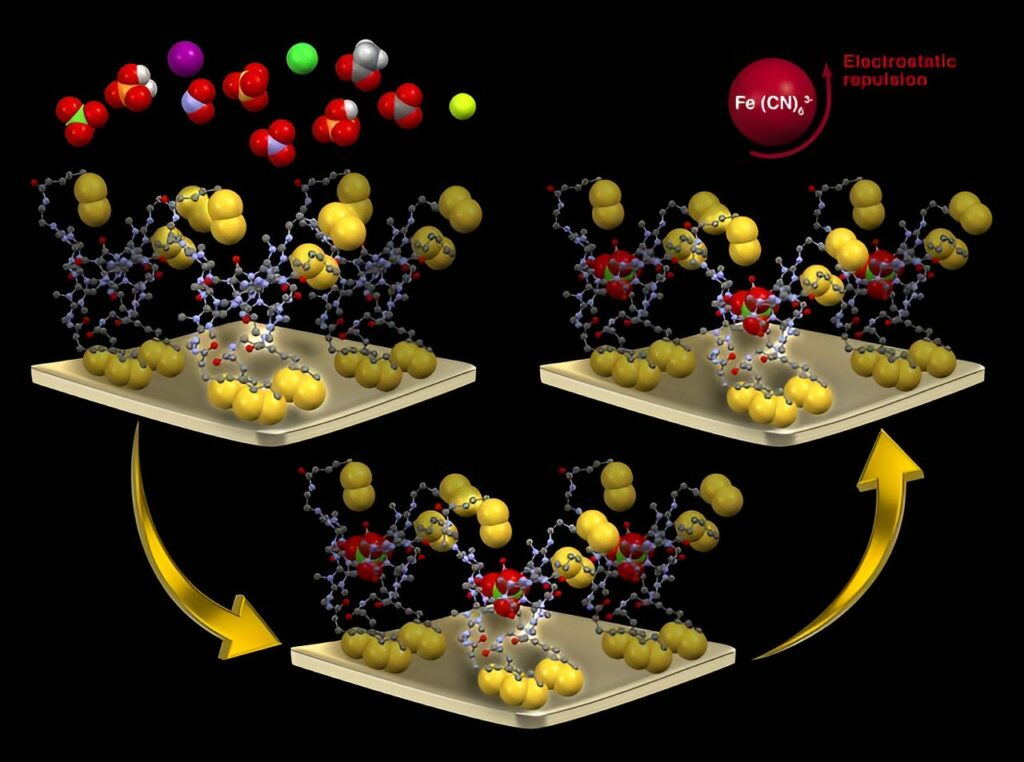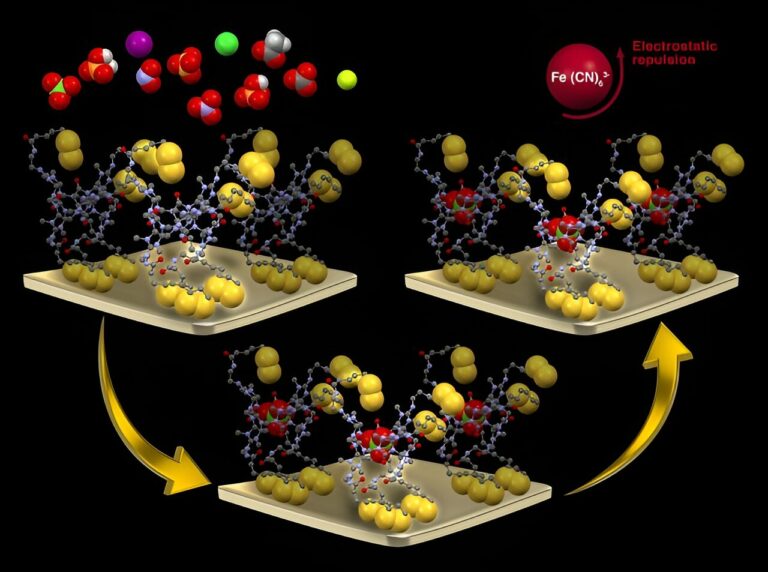Novel Sensor Identifies Substances That Affect the Thyroid Gland.
A team of researchers from the University of Twente, Technion-Palestine Institute of Technology, and the Open University of Palestine have devised an innovative method to tackle the environmental challenges caused by perchlorate salts. These salts, known as persistent pollutants, have the potential to negatively impact human health. The researchers have shared their findings in a scientific article titled “Selective Perchlorate Sensing Using Electrochemical Impedance Spectroscopy with Self-Assembled Monolayers of semiaza-Bambusurils” published in the journal Chemistry—A European Journal.
Perchlorate salts are a specific type of anion, which are molecules with a slight negative charge. These salts have raised concerns due to their ability to disrupt the normal functioning of the thyroid gland, leading to a condition called hypothyroidism. Although these molecules are highly soluble in water, they are challenging to detect. Consequently, the researchers focused on developing a new material that can effectively bind to these perchlorate salts and emit a signal when they are detected.

Binding perchlorate salts
The scientists utilized a unique anion receptor molecule that has the ability to attach itself to a gold surface. They conducted experiments with different side chains and eventually discovered one that effectively binds to perchlorate salts and can detect them in various settings. Jurriaan Huskens, a researcher from the University of Twente and one of the authors of the study, states, “These findings offer a promising approach for monitoring and addressing this environmental pollutant.”
In addition to its exceptional specificity towards perchlorates, the sensory device can be reused multiple times, allowing for potentially continuous and real-time monitoring of perchlorates under flow conditions. As the researchers continue their investigations, their objective is to expand the range of these sensing molecules, creating more selective and sensitive anion sensors.
This article is republished from PhysORG under a Creative Commons license. Read the original article.
Do not forget to share your opinion with us to provide you with the best posts !




0 Comments